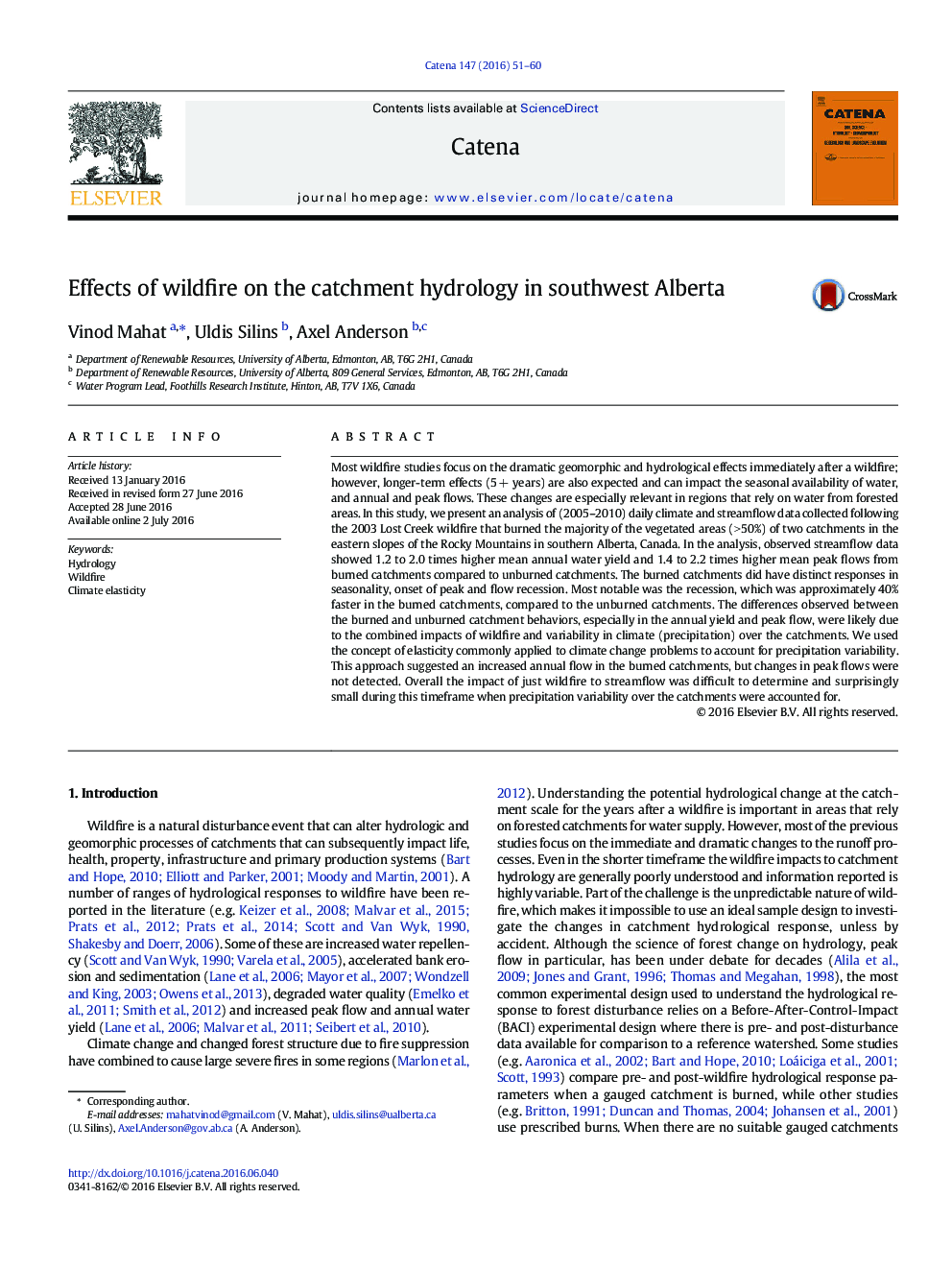| Article ID | Journal | Published Year | Pages | File Type |
|---|---|---|---|---|
| 6407687 | CATENA | 2016 | 10 Pages |
â¢The hydrological behavior of two burned and two unburned catchments were analyzed.â¢Differences observed were due to the combined impacts of wildfire and precipitation.â¢The concept of elasticity supported the analysis results for the burned catchments.â¢The concept of elasticity was useful to assess the wildfire impacts on streamflow.
Most wildfire studies focus on the dramatic geomorphic and hydrological effects immediately after a wildfire; however, longer-term effects (5Â + years) are also expected and can impact the seasonal availability of water, and annual and peak flows. These changes are especially relevant in regions that rely on water from forested areas. In this study, we present an analysis of (2005-2010) daily climate and streamflow data collected following the 2003 Lost Creek wildfire that burned the majority of the vegetated areas (>Â 50%) of two catchments in the eastern slopes of the Rocky Mountains in southern Alberta, Canada. In the analysis, observed streamflow data showed 1.2 to 2.0 times higher mean annual water yield and 1.4 to 2.2 times higher mean peak flows from burned catchments compared to unburned catchments. The burned catchments did have distinct responses in seasonality, onset of peak and flow recession. Most notable was the recession, which was approximately 40% faster in the burned catchments, compared to the unburned catchments. The differences observed between the burned and unburned catchment behaviors, especially in the annual yield and peak flow, were likely due to the combined impacts of wildfire and variability in climate (precipitation) over the catchments. We used the concept of elasticity commonly applied to climate change problems to account for precipitation variability. This approach suggested an increased annual flow in the burned catchments, but changes in peak flows were not detected. Overall the impact of just wildfire to streamflow was difficult to determine and surprisingly small during this timeframe when precipitation variability over the catchments were accounted for.
